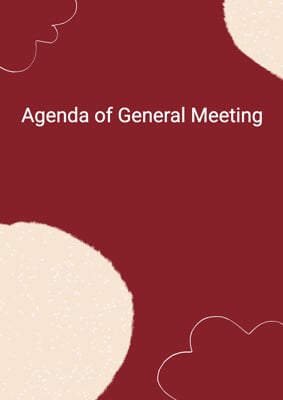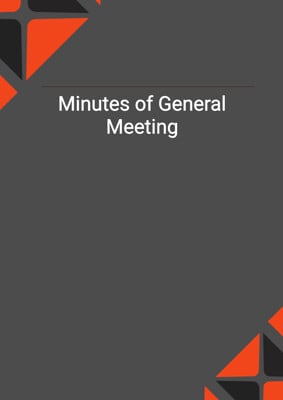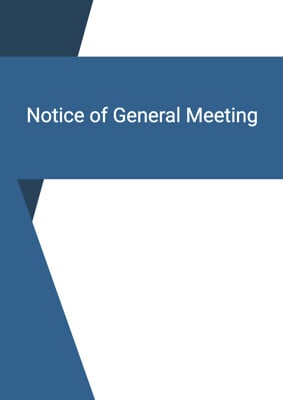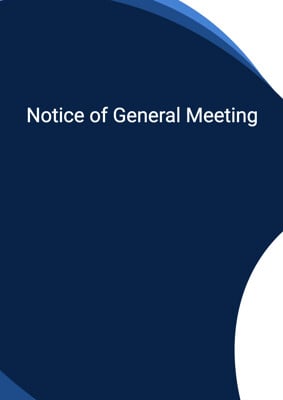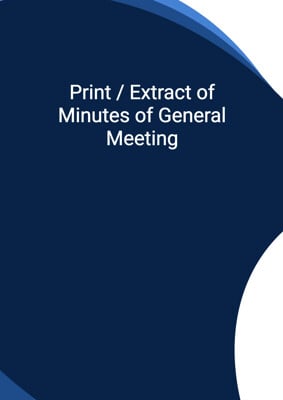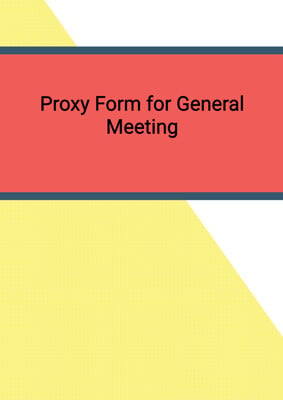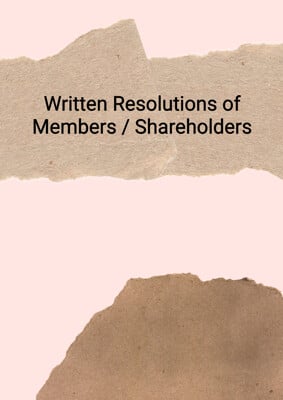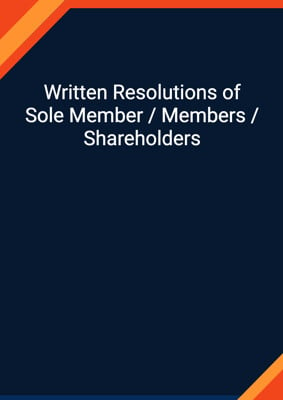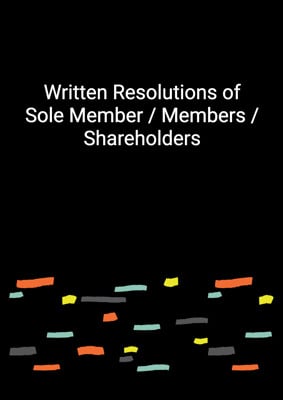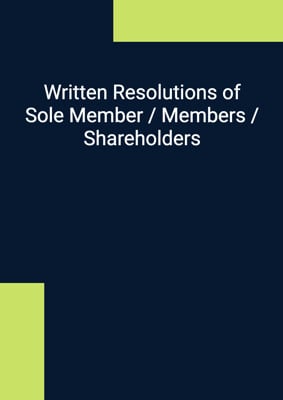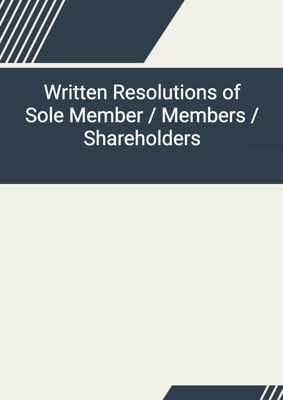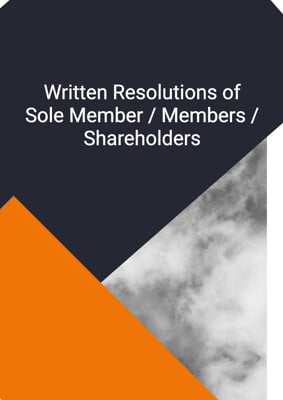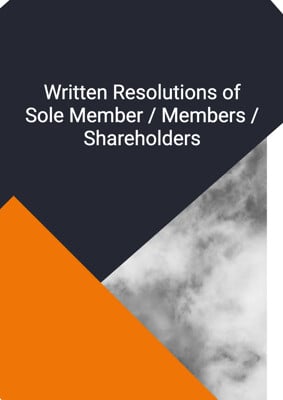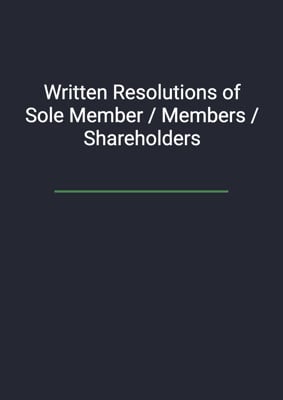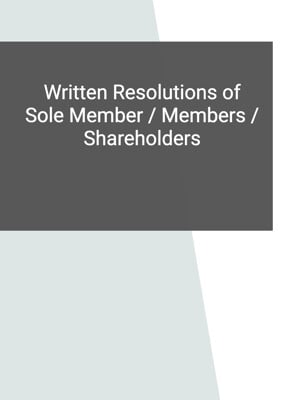How to Tailor the Document for Your Need?
01
Create Document
Click "Create Document" button and the document will be prepared with your account details automatically filled in.
02
Fill Information
Please fill in any additional information by following the step-by-step guide on the left hand side of the preview document and click the "Next" button.
03
Get Document
When you are done, click the "Get Document" button and you can download the document in Word or PDF format.
04
Review Document
Please review the document carefully and make any final modifications to ensure that the details are correct before publication / distribution.
Document Preview
Document Description
The 'Agenda of General Meeting' document is an important document that outlines the schedule and topics to be discussed during a general meeting of a company. It serves as a guide for the participants and ensures that the meeting is conducted in an organized and efficient manner.
The document begins with the title 'Agenda of General Meeting' which clearly indicates its purpose. It contains various sections that provide a detailed introduction and description of each part of the meeting.
The first section is the 'Call to Order' which is chaired by the designated person. This section sets the tone for the meeting and signals the official start of the proceedings.
The second section is 'Establish Quorum' which ensures that the minimum number of participants required for a valid meeting is present. This step is crucial as it determines whether the meeting can proceed or not.
The third section is 'Chairperson's Remark' which allows the chairperson to make any necessary announcements or remarks before moving on to the agenda items.
The fourth section is 'Approval of Agenda' where the participants review the proposed agenda, make any necessary corrections or additions, and then approve the final agenda for the meeting.
The fifth section is 'Review of Previous Annual Meeting Minutes' where the minutes of the previous annual meeting are read, amended if necessary, approved, and filed for record-keeping purposes.
The sixth section is 'Financial Report' which includes the presentation of the annual financial report by the treasurer and the auditor's report. This section provides an overview of the company's financial performance.
The seventh section is 'Committee Annual Reports' where the various committees present their annual reports. This section allows the participants to be informed about the activities and achievements of each committee.
The eighth section is 'Director's Report' where the director of the company presents a report on the overall performance and strategic direction of the company.
The ninth section is 'Review Ordinary Resolutions' which includes the consideration and potential passing of ordinary resolutions. These resolutions typically involve matters such as receiving the audited accounts, declaring dividends, re-appointing directors and auditors, and authorizing their remuneration.
The tenth section is 'Review Special Resolutions' which involves the consideration and potential passing of special resolutions. These resolutions are usually related to significant changes or decisions that require a higher level of approval.
The eleventh section is 'Election of Office' where the participants elect individuals to fill specific positions or roles within the company.
The twelfth section is 'Other Speaker' which allows for the inclusion of additional speakers or presentations that are relevant to the meeting.
The thirteenth section is 'Adjournment' which marks the end of the meeting or a temporary pause in the proceedings.
Overall, the 'Agenda of General Meeting' document provides a comprehensive outline of the meeting and ensures that all necessary topics are addressed and discussed in an orderly manner.
How to use this document?
1. Call to Order: The designated chairperson should officially start the meeting at the specified time.
2. Establish Quorum: Ensure that the minimum required number of participants is present for the meeting to proceed.
3. Chairperson's Remark: Allow the chairperson to make any necessary announcements or remarks before moving on to the agenda items.
4. Approval of Agenda: Review the proposed agenda, make any necessary corrections or additions, and then approve the final agenda for the meeting.
5. Review of Previous Annual Meeting Minutes: Read, amend if necessary, approve, and file the minutes of the previous annual meeting.
6. Financial Report: Listen to the treasurer's presentation of the annual financial report and the auditor's report.
7. Committee Annual Reports: Pay attention to the reports presented by the various committees to stay informed about their activities and achievements.
8. Director's Report: Listen to the director's report on the overall performance and strategic direction of the company.
9. Review Ordinary Resolutions: Consider and potentially pass ordinary resolutions such as receiving the audited accounts, declaring dividends, re-appointing directors and auditors, and authorizing their remuneration.
10. Review Special Resolutions: Consider and potentially pass special resolutions that involve significant changes or decisions requiring a higher level of approval.
11. Election of Office: Participate in the election process to fill specific positions or roles within the company.
12. Other Speaker: Listen to additional speakers or presentations that are relevant to the meeting.
13. Adjournment: Mark the end of the meeting or a temporary pause in the proceedings.
Not the right document?
Don’t worry, we have thousands of documents for you to choose from:


